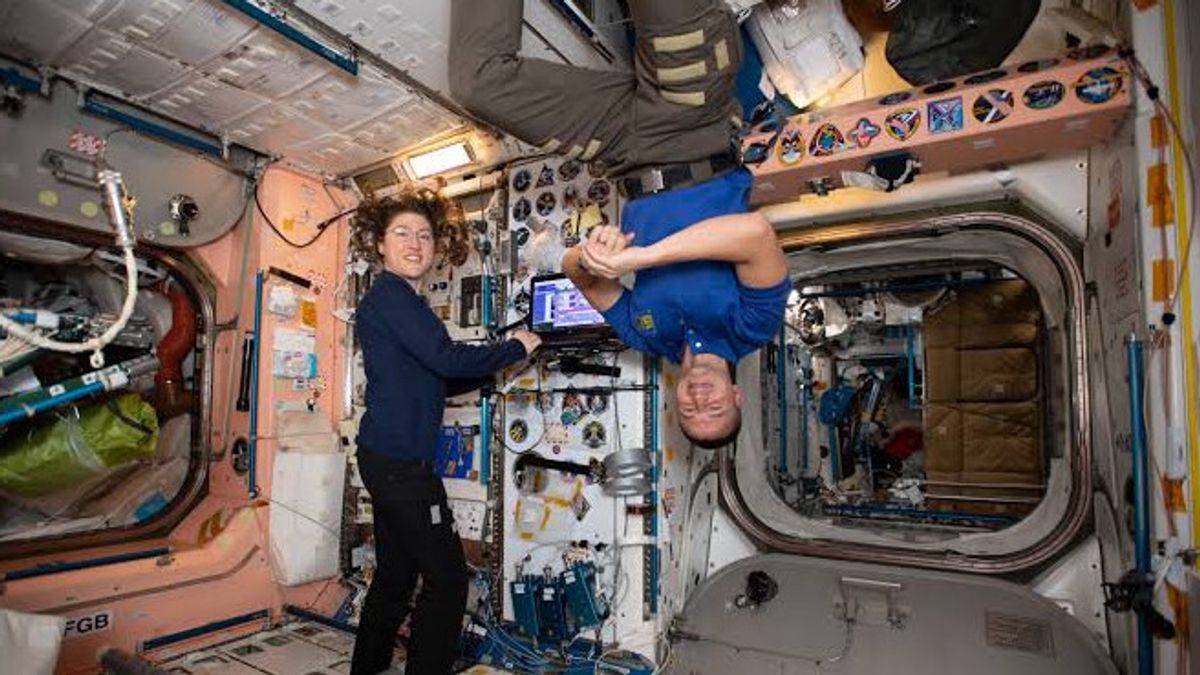JAKARTA - A new study revealed that the International Space Station (ISS) is filled with dust, not ordinary dust but toxic chemicals.
In an analysis of dust samples from air filters taken on the ISS, it is found to contain levels higher than the average number of potentially dangerous types of chemicals, including so-called chemicals forever compared to dust in homes on Earth.
Some are perfluorooctanoic acid (PHOA), compounds that are often found in anti-stick products, stain resistant, food packaging, and fire extinguisher foam.
On the ISS, the PFOA rate is around 3.3 parts per million, in comparison, the highest level found in home surveys and child care centers in the United States (US) in 2008 was around 2.0 parts per million.
According to research, the high level of PFOA on the ISS may be due to widespread use of waterproofing treatments that prevent microbes from growing on the Earth-orbiting plane.
"While the concentration of organic contaminants found in dust from the ISS often exceeds the median value found in homes and other indoor environments across the US and Western Europe, the level of this compound is generally in the range found on Earth," said co-author Professor Stuart Harrad of the University of Birmingham, in a statement. a statement, quoted Wednesday, August 9th.
Not only PFOA, contaminants found in dust on the ISS, including ether diffenyl polybromination (PBDEs), hexabromoyclododecane (HBCDD), novel brominated flare retardants (BFR), ester organofosphate (OPE), polycyclic aromatic hydrocarbon (PAH), perfluoroalkil (PFAS), and polyclorinated biphenyl (PPPB).
OPE and BFR are chemicals used to comply with fire safety regulations, such as building installations, furniture fabrics, carpets, and foams.
Not a few studies have revealed that this compound can have a negative impact on children's health. The researchers stated that BFR continues to increase on the ISS as astronauts sometimes suck up wall panels and acoustic inflation.
Likewise, the foam found in each ISS room is to package and protect goods from severe shocks when sent via rocket launches.
The researchers suspect that some of the chemicals (PBDE) found in dust on the ISS may come from plastic in items that astronauts bring for personal use, namely MP3 players, cameras, and tablets that can all contain fire-resistant layers.
As for why there are high-level chemicals on the ISS, perhaps partly due to higher levels of ionizing radiation in orbit.
The radiation makes material age faster on the ISS, breaking plastic into micro plastic and nanos floating in microgravity environments.
With these new findings published in the Environmental Science and Technology Letters, researchers and NASA Research Center Glenn hopes their work can help engineers choose non-toxic materials and guide spacecraft designs in the future.
"Our findings have implications for the ISS and habitat in the future, where it is possible to exclude many contaminant sources with careful material options in the early stages of design and construction," concluded Hardad.
For information, the ISS is currently not only inhabited by astronauts from NASA, there are also Russia (Roscosmos) and the United Arab Emirates (UAE).
Soon on August 15, the Crew-7 mission will also launch to the ISS with NASA astronaut Jasmin Moghbeli, ESA astronaut (European Space Agency) Andreas Mogensen, JAXA astronaut (Japan Aerospace Exploration Agency) Satoshi Furukawa and Konstantin Borisov from Roscosmos.
The English, Chinese, Japanese, Arabic, and French versions are automatically generated by the AI. So there may still be inaccuracies in translating, please always see Indonesian as our main language. (system supported by DigitalSiber.id)













